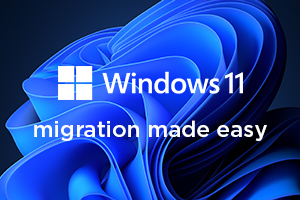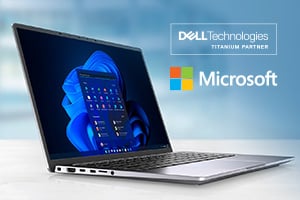How Windows 11 is Reshaping Hybrid Work Culture
The COVID-19 pandemic forced businesses to quickly adapt to remote and hybrid work models to maintain their operations. A traditional office...
2 min read
![]() Zones
:
Feb 8, 2022 4:00:00 AM
Zones
:
Feb 8, 2022 4:00:00 AM

Especially right now, with so many businesses adapting to a new era of remote and hybrid work, it’s important for IT leaders to put an emphasis on workplace modernization. And while often, this conversation focuses primarily on giving users new devices, it’s worth noting that devices are only one piece of the puzzle. Another less heralded, yet still equally crucial part of the equation is operating systems.
What OS are your employees using on their devices? Is there room for improvement there? Let’s talk about it.
TechRadar pointed out that in many cases, people don’t even have a choice – they’re being forced to make the move from Windows 10 to Windows 11 as we speak. Thomas Koll, CEO of Laplink Software, noted that worldwide shipments of PCs grew by 14.2% in 2021, to 347 million total units, and the majority of those new machines came with Windows 11. That means, whether they like it or not, millions of people are being compelled to adapt to a new, Windows 11-powered lifestyle.
“Purchasing a new PC running Windows 11 is not only a new beginning,” Koll explained. “It’s the continuation of what we had and did before. A new PC gives us the opportunity to progress our world, with the help of a new and improved platform to adapt and accelerate what we do with increased efficiency and productivity.”
This all sounds great – but it can also be daunting. After all, our PC operating systems essentially rule our lives, especially in the workplace. Almost everything we do begins with logging into an OS and taking on tasks, large and small. A new computing interface is practically a new life.
So what’s the best way to adapt? Koll recommends a step-by-step process. In all likelihood, you’re not starting an entirely new user experience from scratch – you’re taking your old one and transferring it, piece by piece. You’ve got user profiles, settings, applications, files, and so on – the best approach is to transition each piece, one at a time. This is more challenging now than ever, as many users also have elements stored in cloud-based platforms like OneDrive, Dropbox, or Google Drive, thus adding another layer of complication. But nonetheless, it can be done.
Ideally, your business would have an approach to OS migration that would save you time, mitigate risk, and go easy on your budget. No organization wants to pour too many resources into a mundane IT task like updating operating systems, so the key is to have a simple straightforward process that doesn’t overtax your resources.
At Zones, we can help you find just that. With our Zones ITAM Solutions, we will empower your IT team to assess the unique business, technical, and user requirements your business is facing. We’ll work with you to create a roadmap and a strategic plan for Windows 11 migration. This will include a complete hardware and software inventory, an accounting of your user profiles and application groups, and a comprehensive software licensing review.
Migrating to Windows 11 doesn’t have to be a chore for your business – instead, it can be a big opportunity. With Zones’ help, you can make the most of it. Connect with us today to begin that journey.
-3.png)
The COVID-19 pandemic forced businesses to quickly adapt to remote and hybrid work models to maintain their operations. A traditional office...

Especially right now, as remote and hybrid work become increasingly common, corporate IT leaders have been pushing to invest in workplace...

In the modern workplace, endpoint device management has proven to be one of the most complicated aspects of workplace modernization. Deploying new...